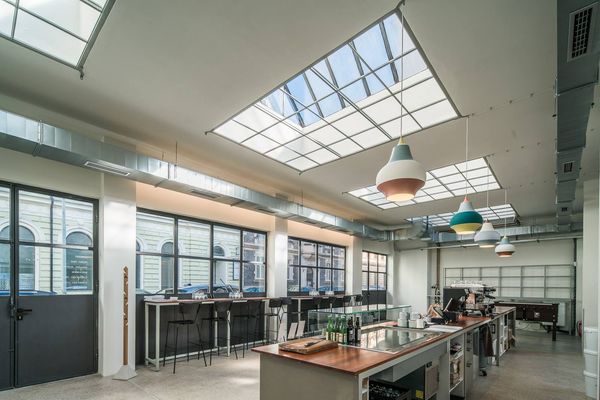Kató Lukáts was a star designer. In her day, she made book illustrations, packaging designs and posters (but even furniture!) for a wide variety of customers. The Viennese still receive Altmann & Kühne candies in her boxes to this day. We can now get a taste of her rich oeuvre at the current exhibition of the Hungarian Museum of Trade and Tourism.
I am always happy and enthusiastic to cross the doorstep of the Hungarian Museum of Trade and Tourism, knowing that I will receive many interesting and familiar things here. When I see Persil detergent or Flora laundry soap ads adorning the hallway wall, my heart always skips a beat, not to mention the Franck enamel board in red-yellow-blue colors. I can often spend half a day in this museum, and I recommend this to anyone who can do it (by the way: for HUF 1,500, you can visit the permanent and temporary exhibitions). Unfortunately, this time I had much less time to enjoy the art, but I would not have missed the exhibition of Kató Lukáts’s work for the world.
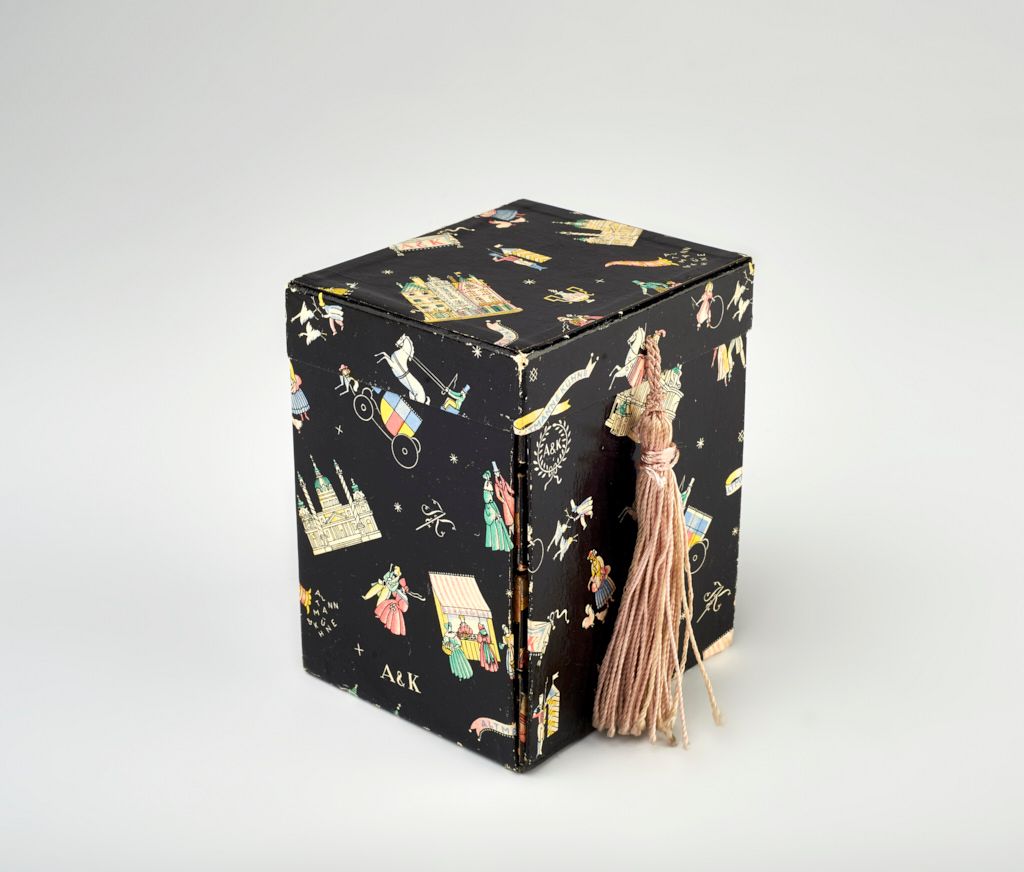
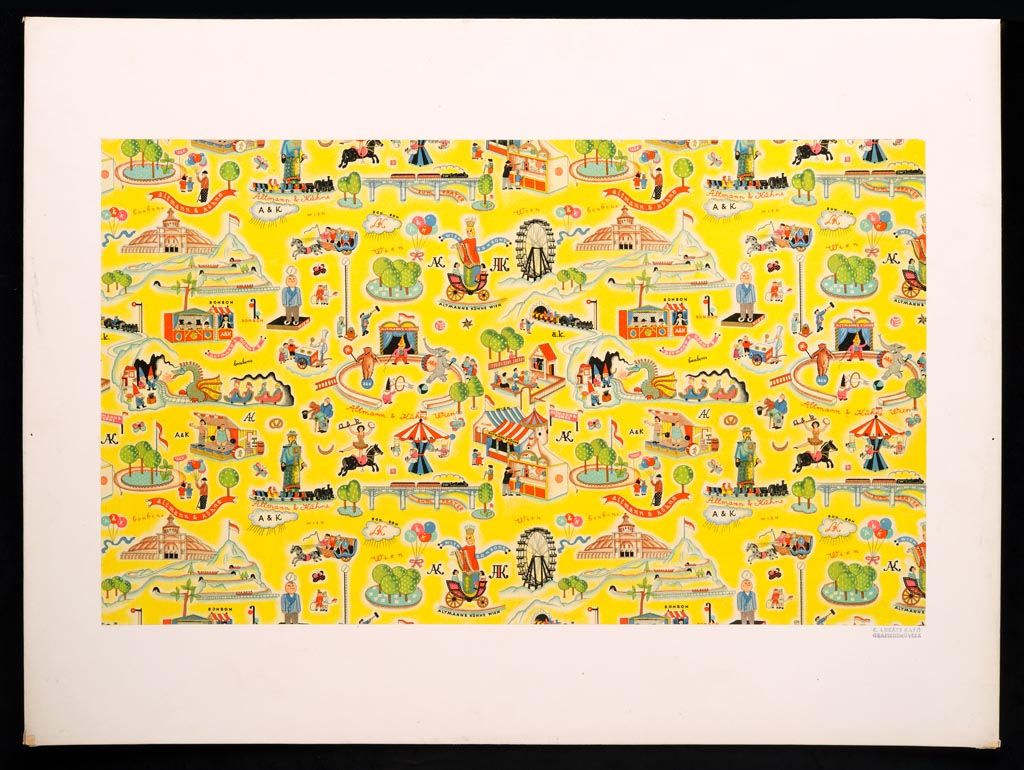

The first thing that comes to mind about this outstanding designer of Hungarian art deco is the wonderful wrapping papers and candy boxes, and lining up next to them are also the children’s books that have made our childhood unforgettable. Thanks to Kató Lukáts, there are countless book illustrations—just think of the “Gőgös Gúnár Gedeon” (Gedeon, the Haughty Goose—free translation), the “Zengő ABC”, (Sonorous ABC—free translation) or the “Ablak-Zsiráf” (Hungarian picture dictionary for children) known as a child.
However, at the exhibition entitled “Fairytale Shop and Gold Brush” opened at the Hungarian Museum of Trade and Tourism, we can not only find iconic publications (as the title suggests), but also get a small slice of Lukáts’s rich oeuvre.
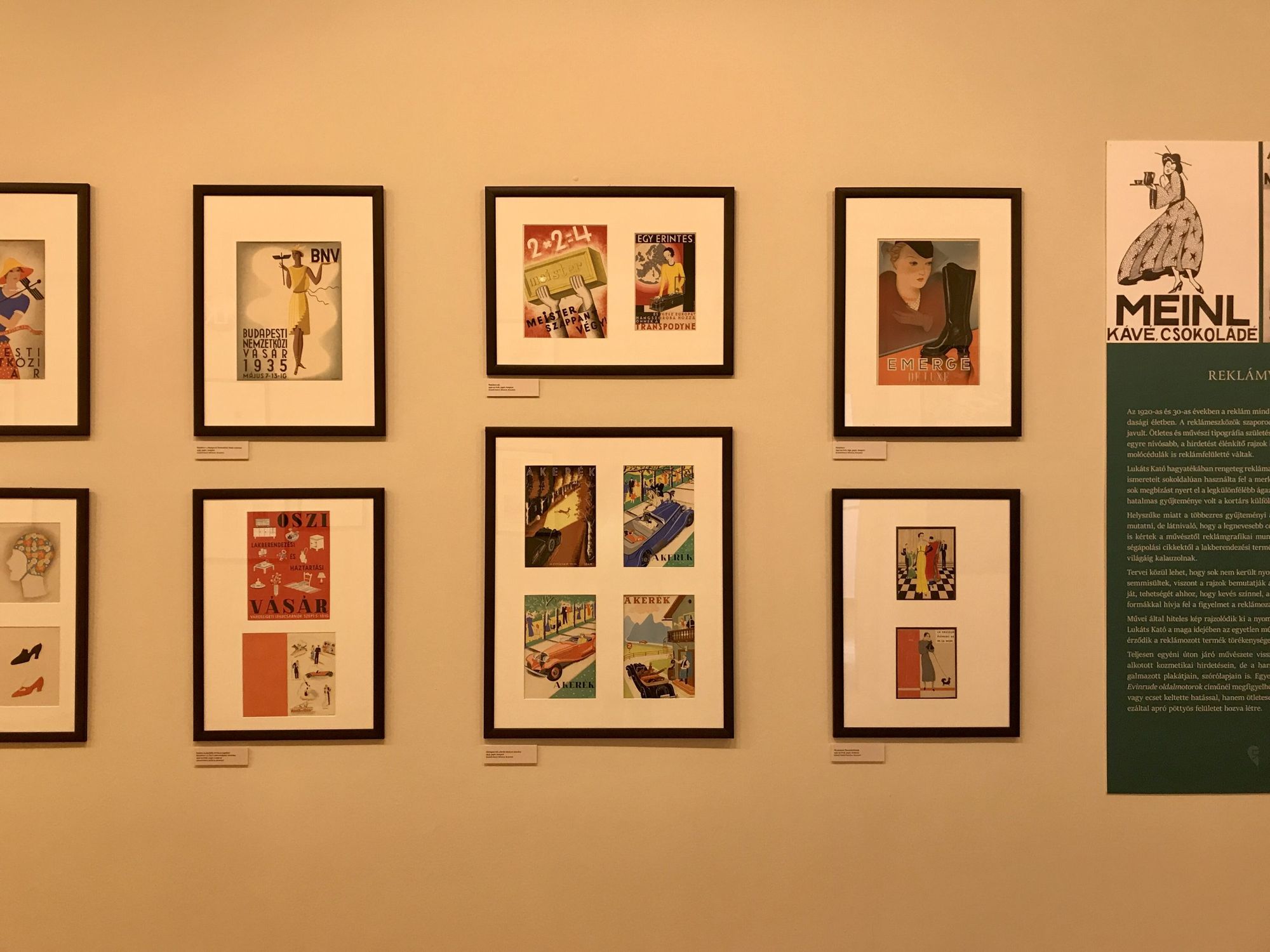

Anyone who is familiar with the creator’s oeuvre knows very well that Lukáts would rightly deserve the star graphic designer title, although she herself would probably object it the most fiercely. On the one hand, because she humbly immersed herself in learning about the profession and mastered its basics—she often referred to the one year she spent at Globus Nyomda after graduating—and on the other hand, because she tried her hand at many areas of applied graphics and always performed to the same high standard, whether it was an advertising plan for a wine shop (Ernő Grünfeld’s wine shop, 1930s), a family of luxury toiletries (Exotic soaps, 1940s), a textbook (“Énekeskönyv az általános iskolák első osztálya számára” / “Songbook for the first grade of primary schools”) or a health propaganda booklet (Tuberkulózis Elleni Országos Szövetség / National Association against Tuberculosis, 1940).
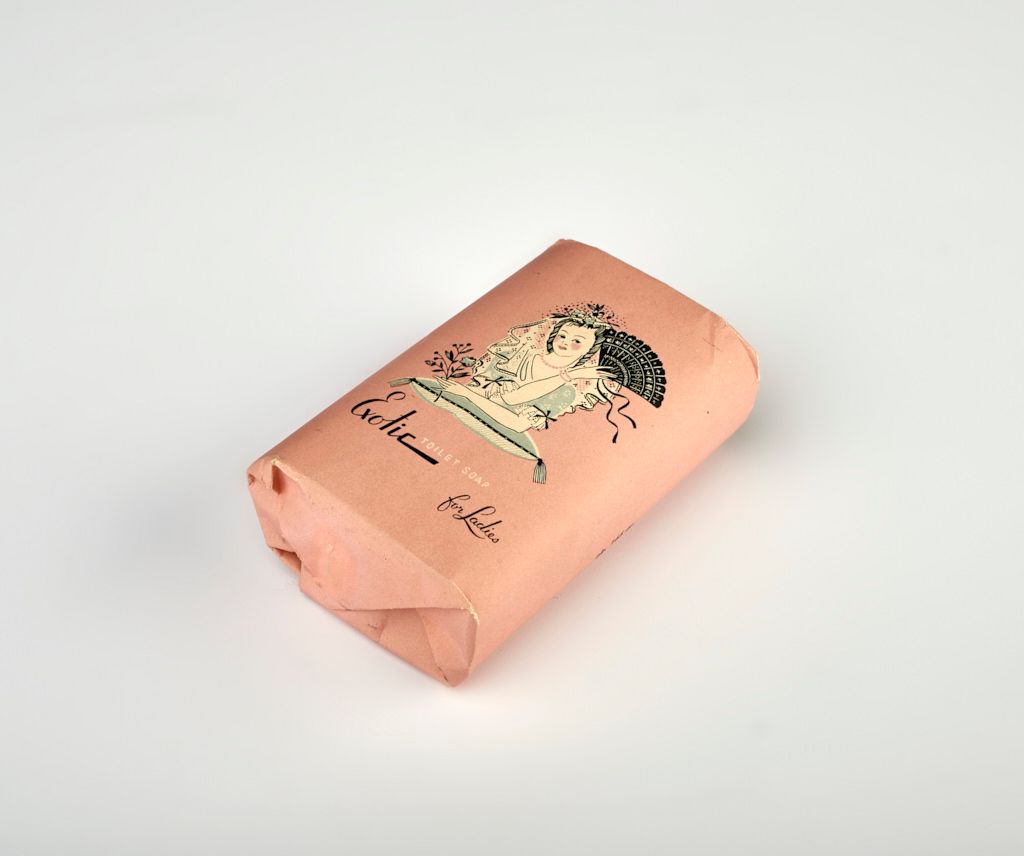
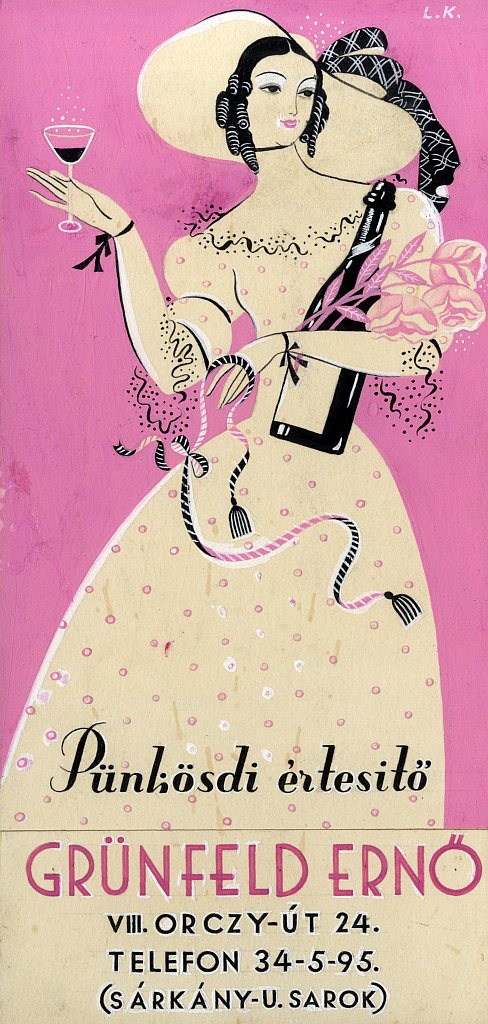
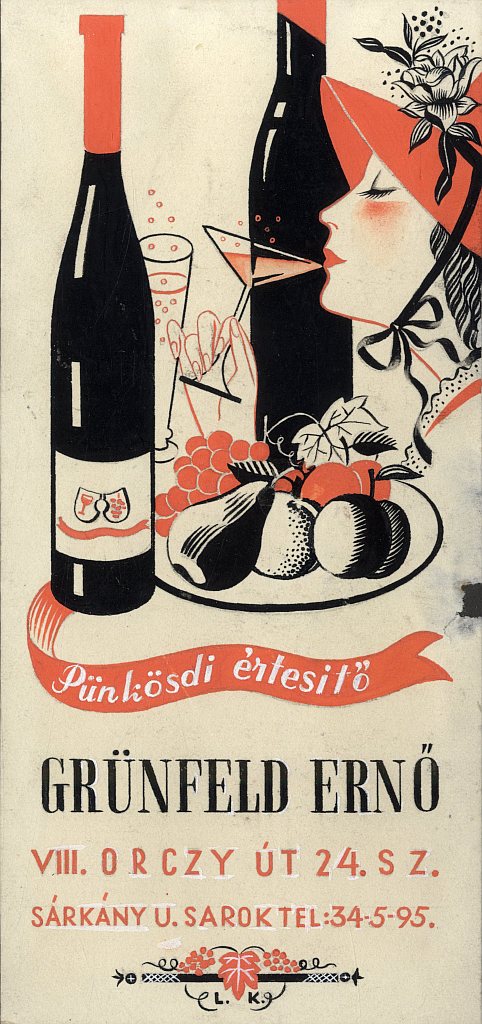
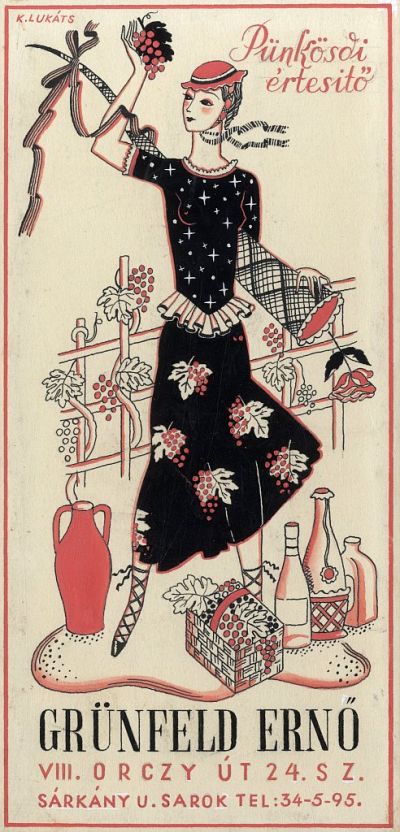
Moreover, Lukáts translated the lovable fairytale world she composed into goods we would not even think of: we smiled when we discovered the graphics designed by Lukáts (not to mention Pál Szerencsés’s lucky poems) in the brochure presenting the Aspirin tablet at the exhibition.
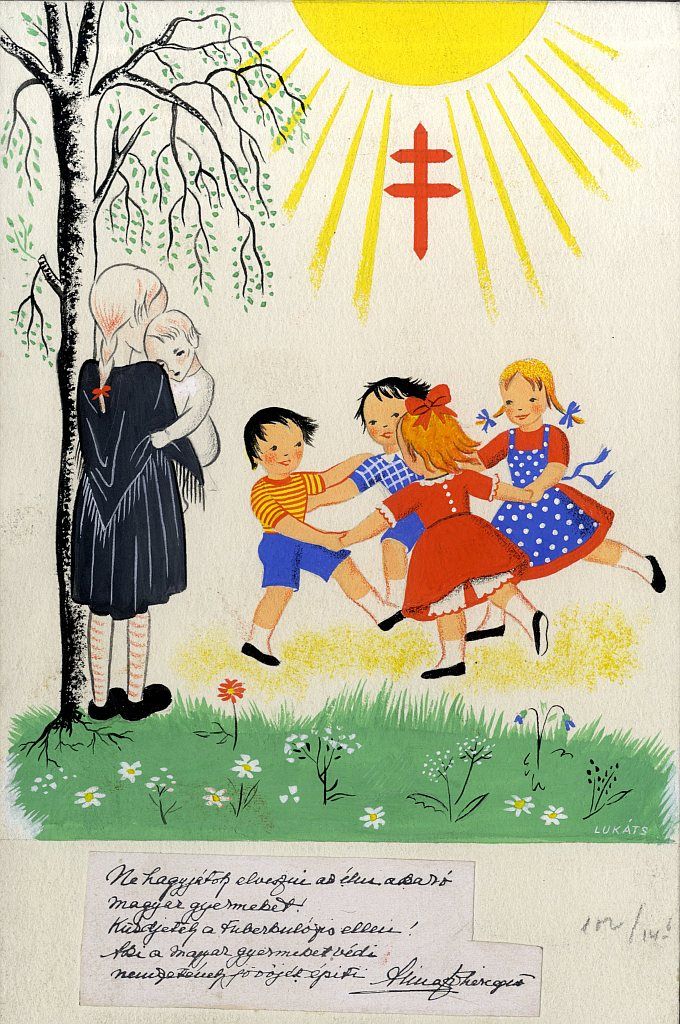
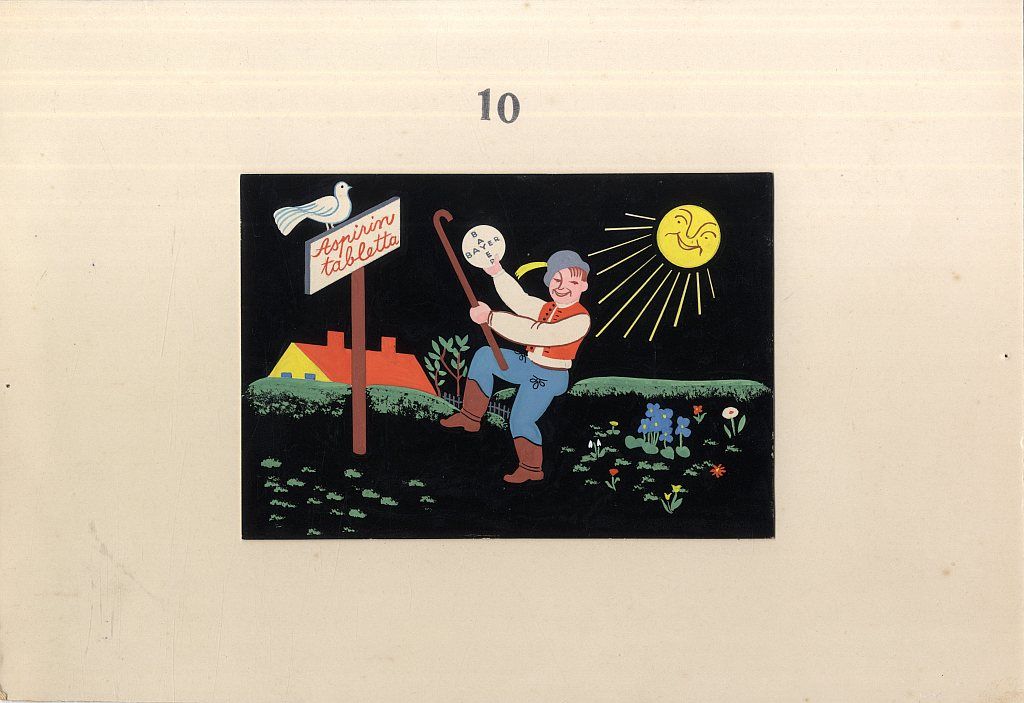
Thirdly, we consider Lukáts to be a big star designer because she gained a reputation not only within the country but also beyond that, which persists to this day—in the form of Altmann & Kühne candy boxes.
Walking between the boards and glass shelves, a large-scale Kató Lukáts exhibition floats before my spiritual eyes, commemorating the greatness of the creator in a worthy way and volume. I hope that in the future it will possible to repeat the success of the 1979 solo exhibition at the Museum of Applied Arts, all the more so because in addition to Kató Lukáts’s poster design entitled “Versenykenyér”, I would like to see a painting by Sándor Bortnyik or other art deco painters, and of course, an old-fashioned Stühmer confectionery set would also be fabulous, full of chocolate boxes—unfortunately, it is not possible at this exhibition, but these few bites are enough to bring our appetite to Lukáts’s oeuvre.

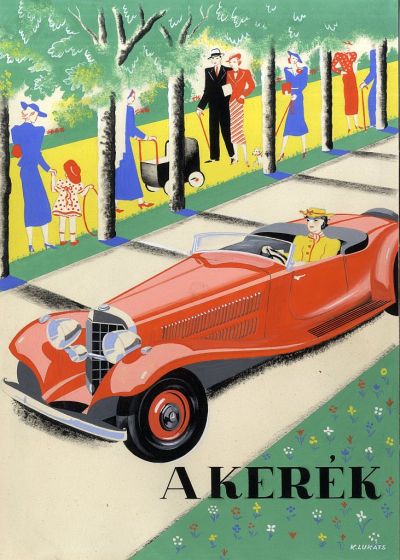
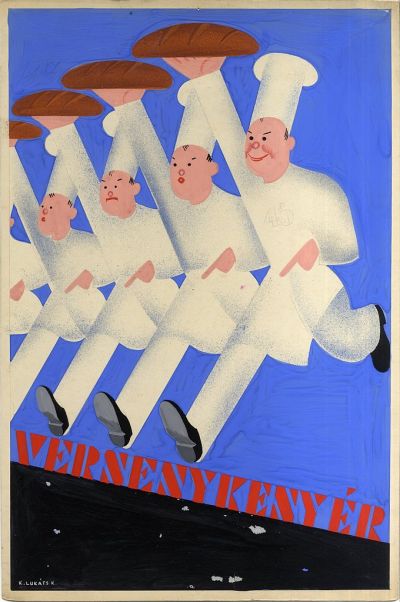
She was a real creative artist who, knowing her tools well, breathed life on various surfaces, be it packaging design or inlaid furniture (she often worked with her husband, Gyula Kaesz, interior designer). There is richness and restraint in her work at the same time, her wrapping paper designs are both exciting and harmonious—we still enjoy her graphics as if they had lost nothing of their freshness over the past decades.
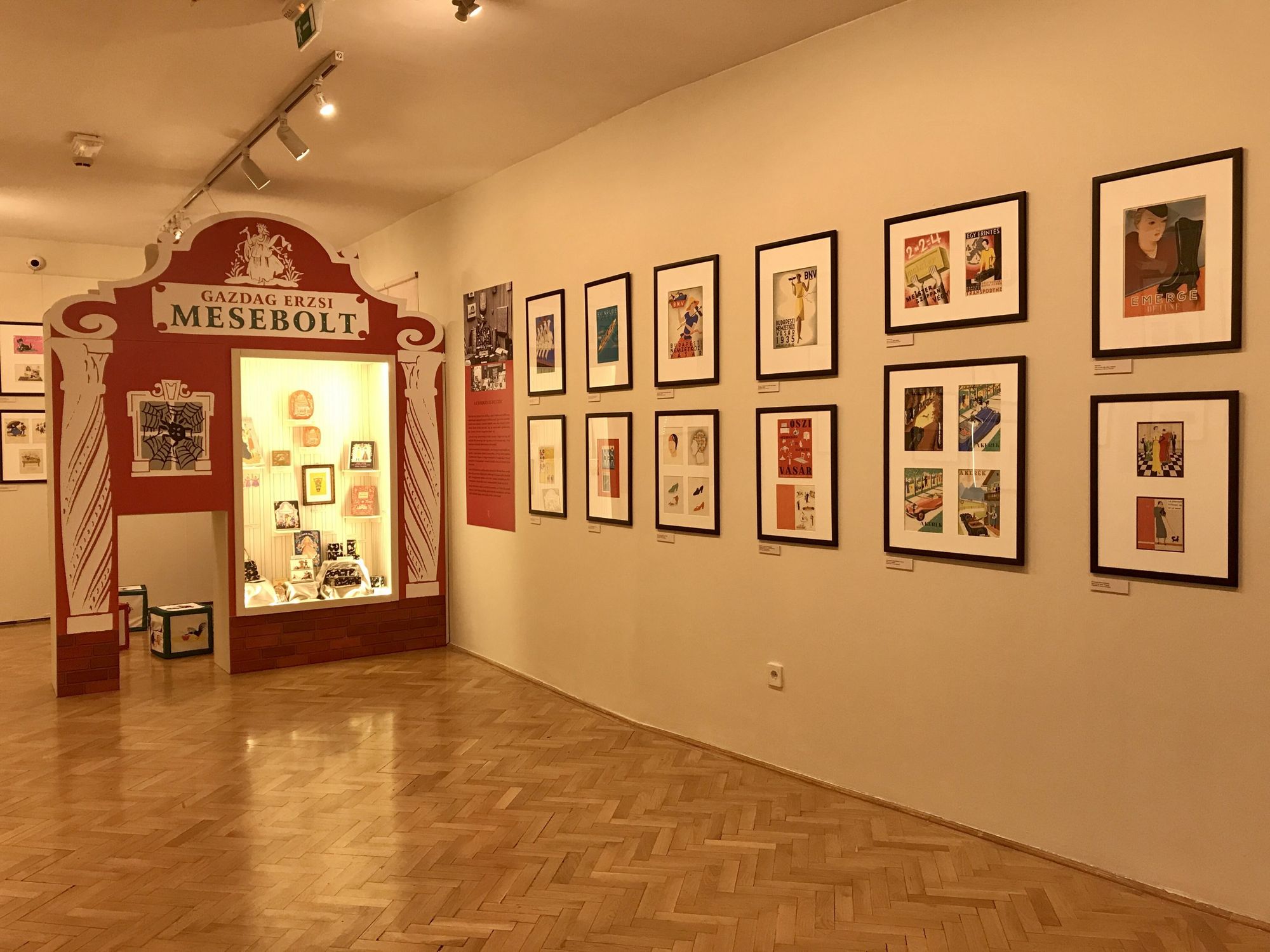
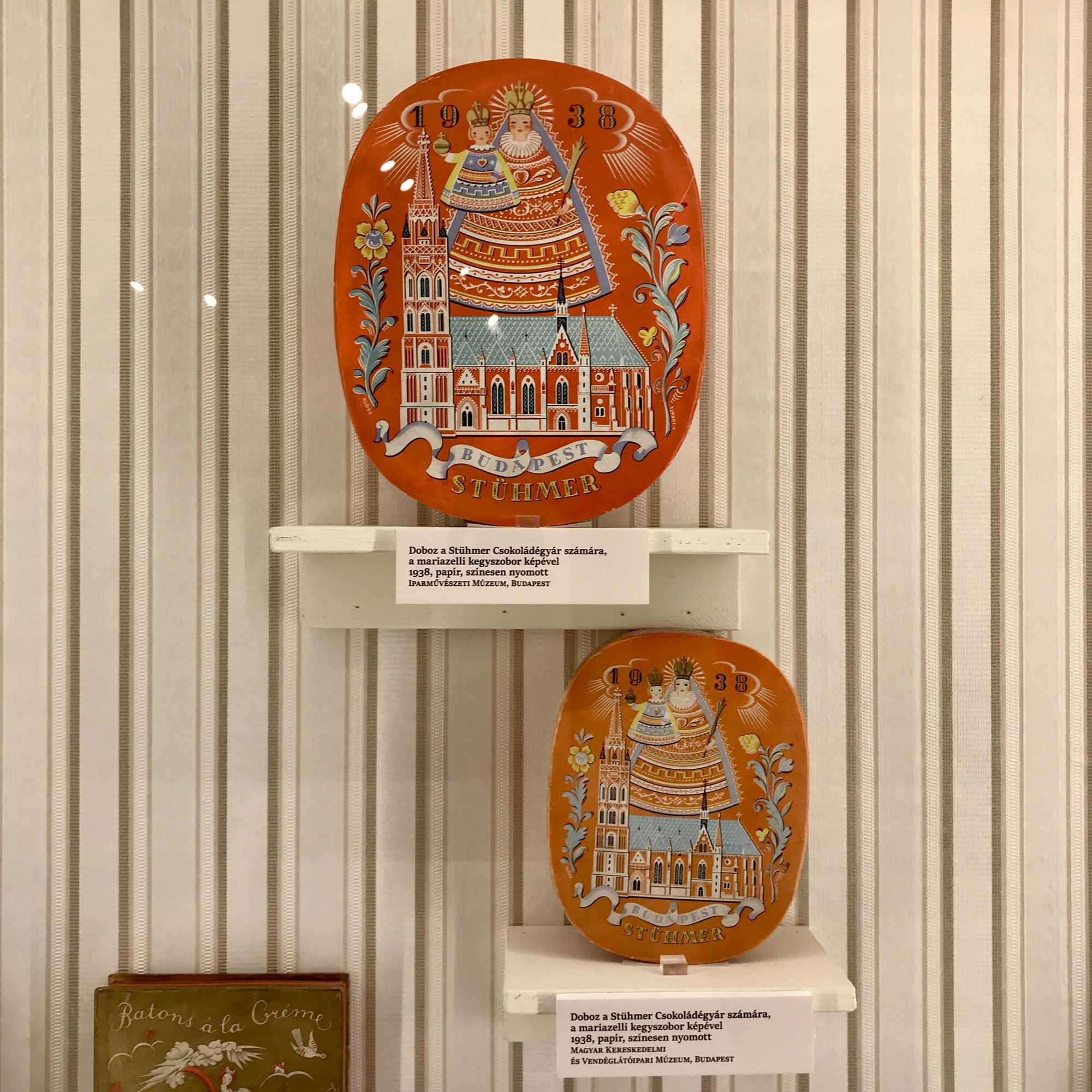
Kató Lukáts’s graphics seem to be based on a secret but very well-functioning recipe and are always apt: the motifs drawn from folk art are not exaggerated, they are rather kind and lovable, cheerful and life-affirming (perhaps that is why she turned to book design after 1945, and was fulfilled in it).
The large “Fairytale Shop” window display (and the publications illustrated by Kató Lukáts) built for the exhibition reminded me of a gigantic gingerbread heart—a piece of dough that invites me to admire it with its delicate, sugary scent and colorful, lacy-like embroidery. Which, although I would be allowed to take a bite, I still prefer to admire it. For me, Kato Lukáts’ art is something like that.
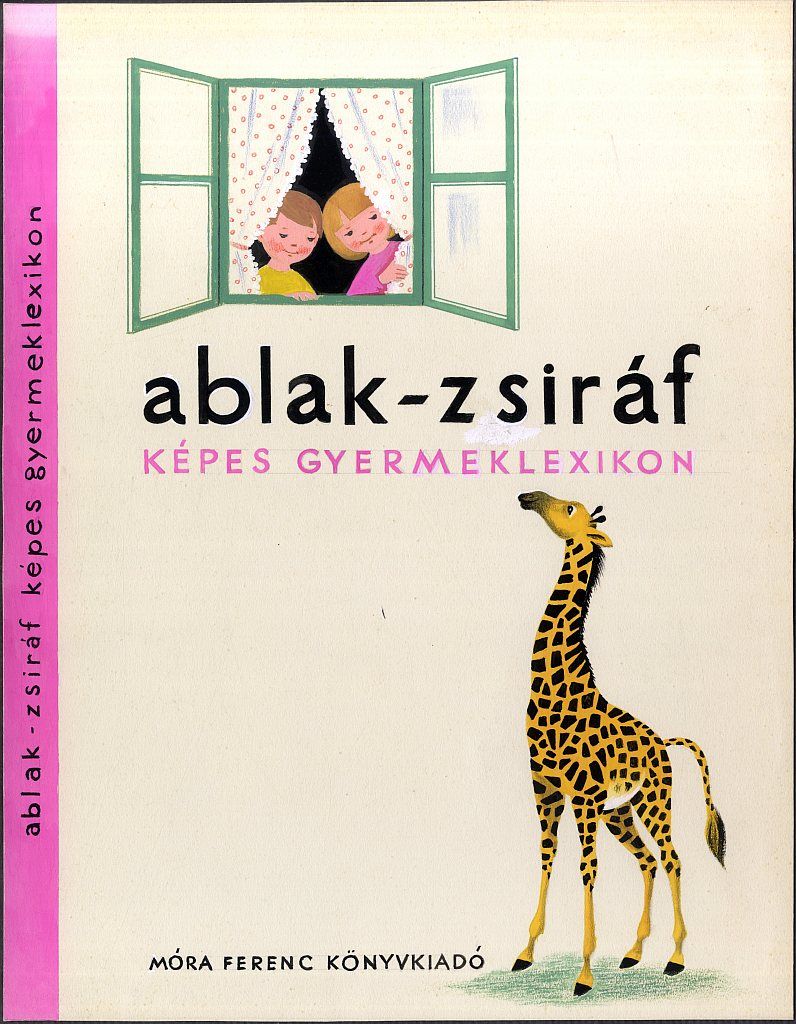
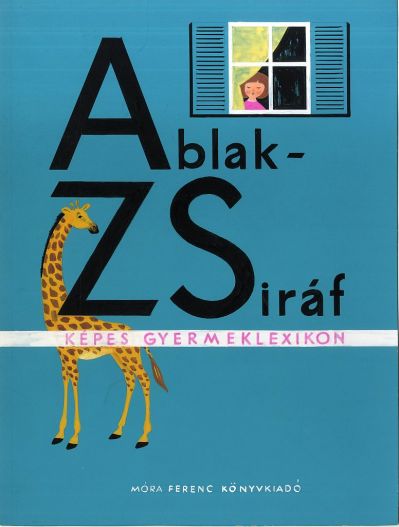
The joint exhibition of the Hungarian Museum of Trade and Tourism and the Museum of Applied Arts, the “Fairytale Shop and Gold Brush”, will be on view at the Hungarian Museum of Trade and Tourism until April 17.
Curators:
Eszter Marosi art historian (Museum of Applied Arts, Budapest)
Kinga Veress art historian (Hungarian Museum of Trade and Tourism, Budapest)
Photos:
Photo 1: Box—for the Altmann & Kühne confectionery in Vienna, circa 1930. Source: Museum of Applied Arts, Collection Database
Photo 2: Wrapping paper—for the Altmann & Kühne confectionery in Vienna, with a stylized view of the Vienna Prater, 1930-1940. Source: Museum of Applied Arts, Collection Database
Photo 3: Wrapping paper—for the Altmann & Kühne confectionery in Vienna, for Christmas, 1930-1940. Source: Museum of Applied Arts, Collection Database
Photo 6: Packaging for Exotic soap, 1940s. Source: Museum of Applied Arts, Collection Database
Photos 7-8-9: Design—Pentecostal notice—for Ernő Grünfeld’s wine shop, 1930-1940. Source: Museum of Applied Arts, Collection Database
Photo 10: Design—page of the booklet promoting the vaccination against tuberculosis, 1940. Source: Museum of Applied Arts, Collection Database
Photo 11: Design—a page in the Aspirin tablet brochure, 1930s-1940s. Source: Museum of Applied Arts, Collection Database
Photo 12: Poster design—Evinrude outboard motors, 1930-1940. Source: Museum of Applied Arts, Collection Database
Photo 13: Design—the cover of the Kerék magazine, 1926-1938. Source: Museum of Applied Arts, Collection Database
Photo 14: Poster design—advertisement for Versenkenyér, circa 1961. Source: Museum of Applied Arts, Collection Database
Photo 17: Design—the cover of Ferenc Mérei and Ágnes Binét: Ablak-Zsiráf picture dictionary for children, 1971. Source: Museum of Applied Arts, Collection Database
Photo 18: Design—cover for the Ablak-Zsiráf picture dictionary for children, 1971. Source: Museum of Applied Arts, Collection Database
Hungarian Museum of Trade and Tourism | Web | Facebook | Instagram
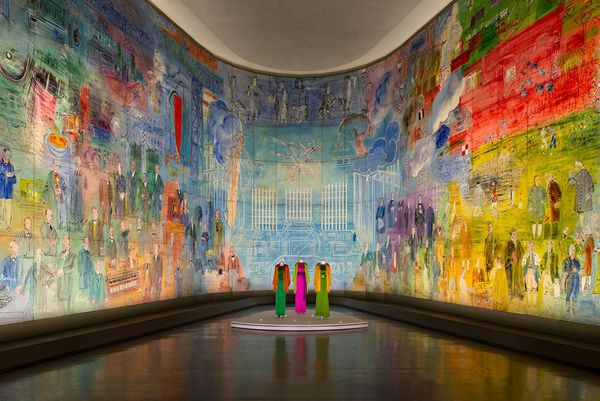
The six most prestigious museums in Paris present the iconic work of Yves Saint Laurent











